Top 10 Heavy Construction Equipment in India - Application Type
In 2018, people are using more construction equipment for a growing number of commercial, residential, and industrial projects that require heavy-duty tools and machinery. Nowadays construction equipment is highly used at construction sites, conducting road maintenance on a busy highway, or searching for the right tool for your large-scale landscaping project, which makes it easier and safer.
Here, some of the top 10 construction equipment are discussed below and their applications.
Backhoe Loaders:

Backhoe loaders are heavy construction equipment. It is a single piece of equipment that is used as a backhoe, a tractor, and a loader. The backhoe is located on the back side of the machine and the loading mechanism is in the front. The tractor is a central operating machine. It can break 2721 kg and lift 1360 kg. Backhoe loaders are ideal for exploitation, excavation, digging, dozing, and demolition, and both work well even on hard soils. The machines are proven and tested with 84 equipment-compatible tractors. The loading capacity of heavy-duty backhoe loaders is good, measuring 1 cu in, and the excavator capacity is 0.24 cu in. The engine power for truck loaders ranges from 49 HP to above 74 HP. The powerful Backhoe Loader is sturdy and waterproof due to the use of a high-grade iron bar and stainless steel in its construction. They are simple to drive and maintain.
Backhoe loaders are very common and can be used for a wide variety of tasks:
1) Farming
2) Construction
3)Excavation
4) Digging and Hauling
Compactors:
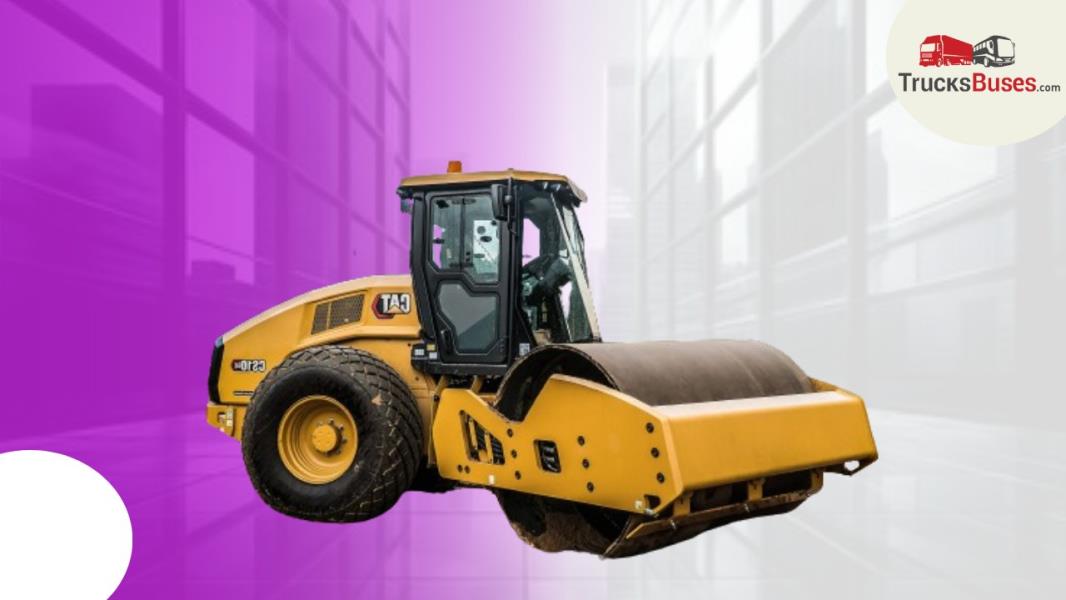
Compactors in heavy construction equipment refer to a specific type of heavy equipment used to compact soil, gravel, or asphalt during road construction, land development, and other infrastructure projects. These compactors come in various forms, including vibratory rollers, plate compactors, and pneumatic compactors, each suited for different types of soil and project requirements. They're essential for achieving proper compaction to ensure the stability and durability of the constructed surfaces. They use a heavy, vertically vibrating plate to crush and compact a surface into a level, flat area. There are 3 types of compactor plates. The force that is used on the plate and the quick and repetitive movements work to break down and compact debris. In industrial areas, plate compactors can be used to flatten an expanse of soil, sand, or gravel.
Based on the plate compactors are divided into 3 types of plates that are:
1) Single Plate Compactor:
These types of compactors are the most suitable for small-scale asphalt or building projects, like home renovations or laying sidewalks and driveways.
2) Reversible Plate Compactor:
These types of compactors are useful for project work that needs more versatility because reversible plate compactors are easily moved in all directions.
3) Heavy-duty plate compactors:
These are the best options for large-scale industrial, construction, or roadway projects.
Compactors are crucial for ensuring proper compaction, which helps prevent future settling, erosion, and structural failures. They're used extensively in road construction, highway maintenance, landfill operations, and various other civil engineering projects to create stable, durable surfaces.
Dozers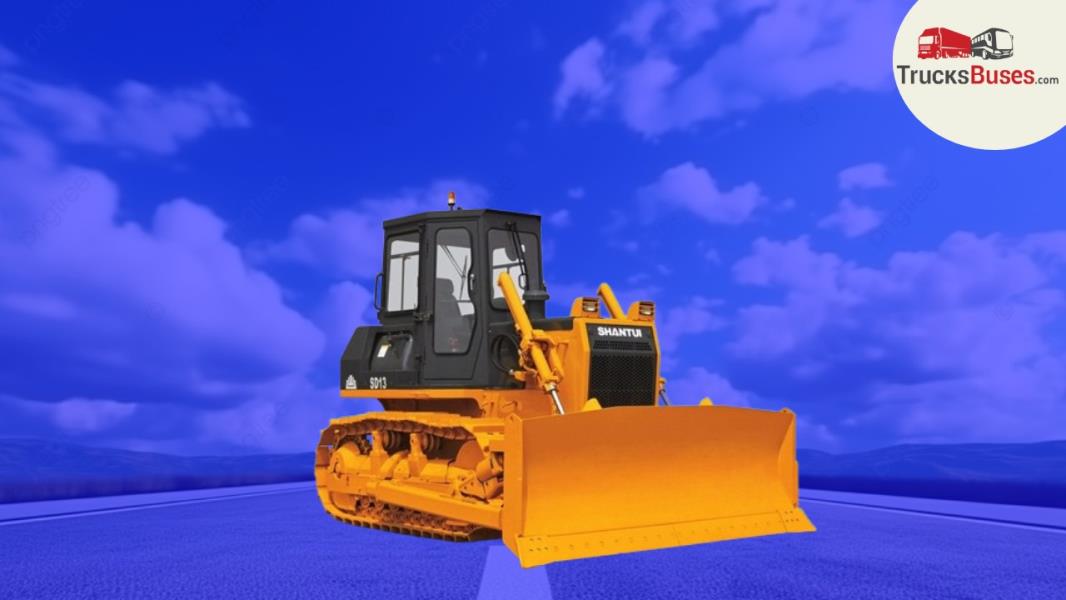
These are also known as bulldozers. Dozers use a heavy-duty track to move with blades that can push rocks, building materials, debris, sand, snow, or dirt. These are also known as track-type tractors and crawlers and these are critical pieces of machine that are used in various types of project work like:
- Farming
- Land clearing
- Road construction
- Demolition
- Home Renovation
Different types of dozer blades are available including the flat, edgeless straight blade, curved universal blade, and semi-universal combination blade.
6 types of dozers:
1) Wheel Bulldozer:
This machine is ideal to use for soft or sensitive ground since the tires are gentler than tracks. It also has completely articulated hydraulic steering and moves on a smaller axis.
2) Crawler Bulldozer:
This heavy-weight machine is great for moving heavy materials from one area to another. This bulldozer is ideal for traversing dense and irregular terrain since the tracks give it great traction. Larger crawlers have rippers that assist with crushing and clearing dense terrain.
3) Shiphold Bulldozer:
Shiphold dozer is used for moving cargo in and out of commercial vessels. These bulldozers are especially useful for loading and unloading bulk cargo shipped overseas, such as coal. These bulldozers are often made with rust-resistant materials, making them more suitable for maritime worksites.
4) Mulcher Bulldozer:
A mulcher dozer is specialized for clearing land. Its mulching attachment easily shreds, grinds and clears large pieces of land. These dozers can clear trees, brush, and shrubbery to prepare the land for development. The mulcher attachment allows the bulldozer to clear the land while acting as a wood chipper to grind the vegetation into smaller pieces.
5) Hybrid Bulldozer:
Hybrid bulldozers are ideal for construction and other tasks where emissions and fuel consumption is a concern. These bulldozer engines use traditional internal combustion engine technology combined with electric components.
6) Mini Bulldozer:
Mini dozer is great for projects that require more maneuverability and versatility than larger machinery. Due to its small size, a compact bulldozer can perform well in different projects that require tasks like grading and clearing lots.
Drills:

Rotary blast hole drills are a type of heavy equipment used for drilling holes at mine sites. Autonomous drills are trendy among equipment handlers. The autonomous drills work more safely and complete projects quickly.
There are various features available in autonomous drills that help us to project safely and quickly. These features are:
- Depth tracking
- Built-in cameras
- Automatic leveling, retracting, and drilling
- HVAC systems cool while limiting dust exposure.
These features can enhance the comfort and safety of your work as well as the overall productivity of the equipment.
Drum Rollers:

Also known as road rollers and compact rollers. These construction machines are used to smooth and level building terrain or roadways at worksites. These rollers are very strong and flatten the surface quickly.
Two types of drum rollers:
1) Smooth rollers:
These rollers may be found in single or double-drum variations. These rollers create smooth surfaces from gravel, sand, or dirt using strong pressure and vibration.
•Single Drum:
Single drums are mainly used in road construction, leveling ground for sidewalks and driveways, preparing sites for building foundations, and compacting soil, gravel and asphalt in smaller areas.
•Double Drum Roller:
Double drum rollers are generally used for asphalt compaction tasks that require more speed and power, such as when flattening and paving large sections of a highway during road construction projects.
2) Padfoot rollers:
Padfoot rollers are used to make soil more compact and solid.
Excavators
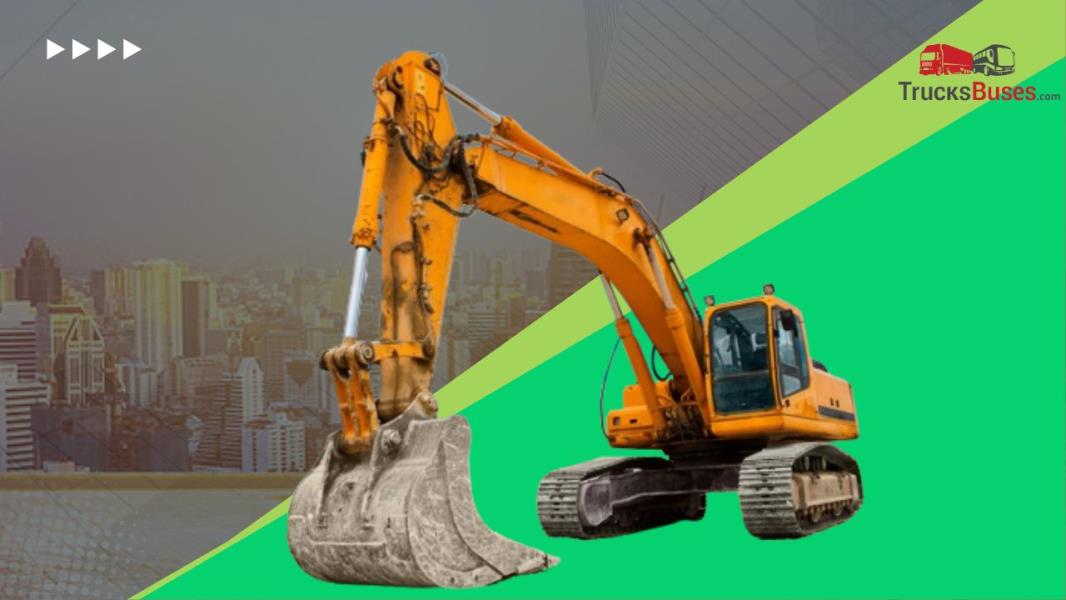
Excavators are highly used in construction machines. These machines are robust and adaptable, making them a common fixture at large and small-scale projects. The excavator's cabin easily moves in all directions while in operation- it is connected to a long arm and bucket which can be used for excavating, demolishing, hauling, brush removal, and even forestry applications.
Based on size range, excavators are of 3 types:
1)Mini Excavators:
These types of excavators are ideal for home-based or small-scale projects. Mini excavators can navigate small, and areas of construction sites that can't be reached easily.
2) Medium Excavators:
Medium Excavator helps in large-scale renovations, and home improvement projects, and medium to large-scale construction sites can benefit from this configuration.
3) Large Excavators:
Large excavators are large and very powerful. They are best suited for high-volume, large-scale operations.
Excavators are used in many ways:
1)Digging of trenches, holes, and foundations
2)Material Handling
3)Brush cutting with hydraulic saw and mower attachments
4)Forestry work & Forestry mulching
5)Demolition with hydraulic claw, cutter and breaker attachment.
6)Mining, especially, but not only open-pit mining.
7)Hydro excavation to access fragile underground infrastructure using high-pressure water.
8)Driving piles, in conjunction with a pile driver
9)Drilling shafts for footings and rock blasting, by use of an auger or hydraulic drill attachments.
10)Snow removal with snowplow and snow blower attachments.
11)Aircraft recycling.
Forklifts:
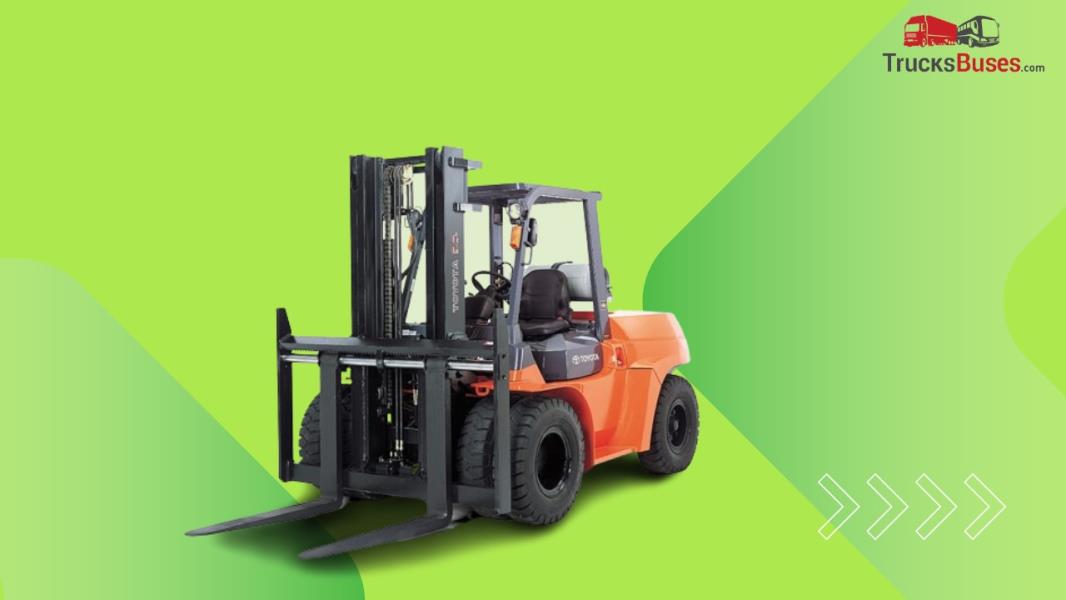
Forklifts are used to move items to short distances around worksites or warehouses safely.
Different types of forklifts are available:
1) Counterweight:
The counterweight is used to directly transport products without physical work. Counterweight forklifts use a built-in counterweight system to remain stable during the transport of products.
2) Side loaders:
These loaders are ideal for warehouses with limited workplaces and bulky materials. The design of the machine allows the operator to load materials directly from their storage rack easily.
3) Pallet jack:
These forklifts are specially designed to move pallets around the warehouses. The size of the pallet jack is small due to the small size of this it is easy to operate.
4)Warehouse:
You can use a warehouse forklift to quickly move supplies, products, and shipments around a warehouse.
Applications of the forklifts:
• Lifting and Transporting Materials
• Loading and Unloading
• Building Site Operations
• Sweepings & Snow Ploughing
• Stacking & Order Picking
Motor Graders
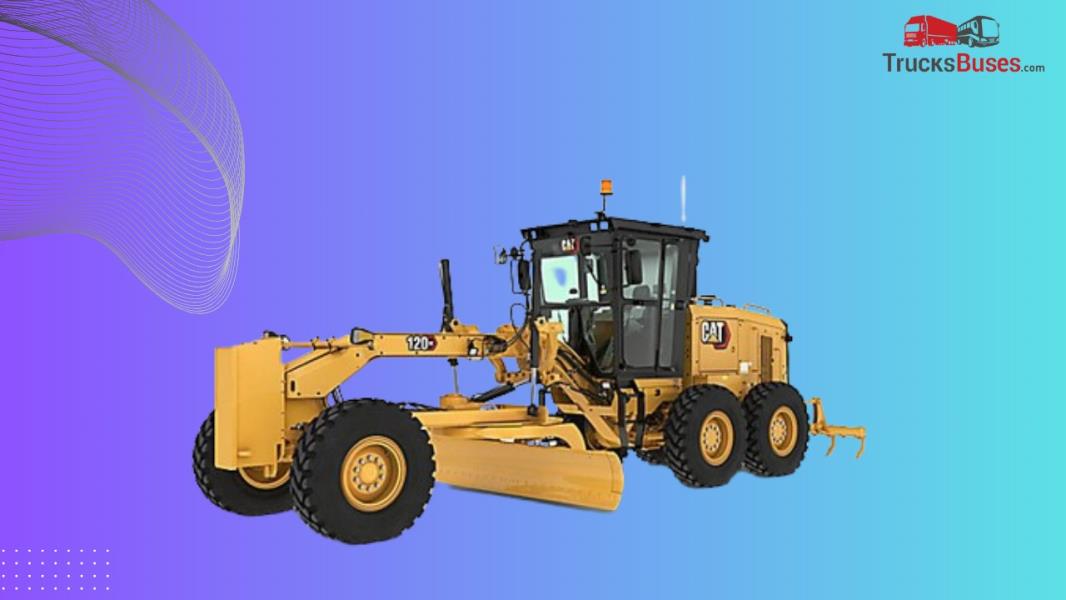
Motor Graders or Road graders have long, narrow blades. Primarily, motor graders are designed to scrape and shift flat or angled substrates to form smooth, level surfaces.
Sometimes, they’re used to shift soil and earth into precise mounds. The blade on a motor grader can be used on construction sites, road works, and farms.
The moldboard is rotatable, with a cutting edge on the bottom to help cut and move terrain for things like:
Roadway installation or maintenance
- Fine grading
- Building projects
- Drainage ditches
- Snow removal
- Spreading materials
Motorgraders are usually better suited for heavy road work projects. Before using the motor graders, it is important to know about how it is operated as different actions impact performance. For example: the leaner you put on the wheels, the deeper a cut will typically be.
Applications for motor graders:
- Build gravel or dirt roads and tracks.
- General ground leveling &
- Terrace sloped gardens and farms.
- Form windrows, turnrows and drainage ditches on farms.
- Smooth the gravel underlay of new tar roads.
- Clear snow and slush from roads in cold areas.
Telehandlers :
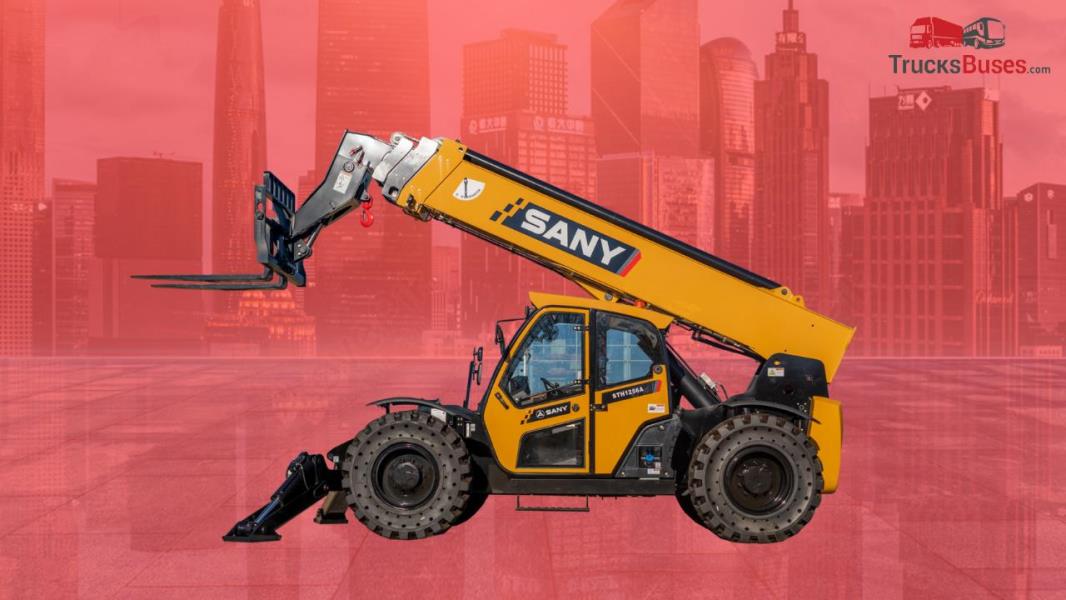
Maco Corporation offers a telehandler at the best price in India. Our telehandler is safe, compatible, and lightweight. Telehandler is an extremely versatile lifting machine that’s predominantly used within the construction enterprise. They’re generally known for lifting pallet boards and removing heavy loads from high-up, hard-to-reach spaces. Telehandlers are versatile machines that are ideal for outdoor applications or bulk material moving inside a warehouse. By connecting various boom attachments, such as buckets or lift platforms, telehandlers can be customized to suit different worksites. There are different types of telehandlers available, each with variations of lift height, load capacity, and frame size to choose from.
Off-Highway Trucks:
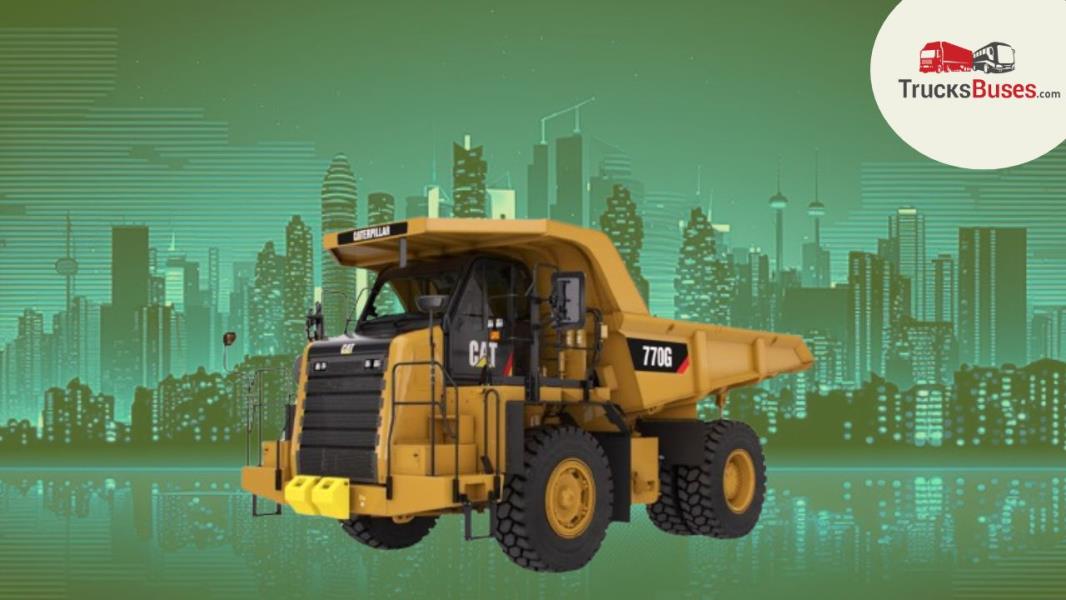
This is a type of dump truck that offers heavy-duty hauling power for any type of harsh work environment. Due to these features, they are a choice in mines, quarries, and large-scale construction sites that require efficient transport of bulk materials. Compared to traditional dump trucks, off-highway haulers can transport a large volume of stone, soil and other materials. Depending on the needs of the project, you could invest in an off-highway truck with multiple dump buckets to be even more efficient.
Frequently Asked Questions on Heavy Construction Equipment
Q.1 What heavy equipment is used in construction?
The most important pieces of heavy equipment for general construction include excavators, bulldozers, and cranes. Excavators are versatile machines used for digging, material handling, and demolition tasks.
Q.2 How heavy is heavy equipment?
The term itself refers to the weight of the machines, which can range from 20 tons up to 1,000+ tons. The most commonly used types of heavy machinery are excavators, loaders, tractors, bulldozers and cranes.
Q.3 What is the life of heavy equipment?
In general, construction equipment will last for about 10,000. But different types of equipment can have different average lifespans. Example: Excavators: about 10,000 hours.
Q.4 Why is heavy equipment important?
Heavy equipment is needed on almost every construction project. Keeping heavy equipment in good working condition can often prevent serious or even fatal incidents.
Also Read :
Top 5 Sleeper Buses in India
Choosing The Right Mahindra Supro Excel Diesel For Your Needs